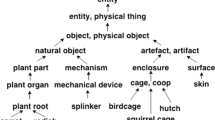Abstract
Recently, the computing paradigm has switched from mainframe and desktop computing to ubiquitous computing; one of whose motivations is to provide intelligent, personalized and comprehensive services to users. As a solution of ubiquitous computing, Active Services has proposed to generate such services on demand by retrieving, adapting, and composing of existing service components. As the popularity of this paradigm, and hence the number of service components increases, how to efficiently retrieve components to maximally meet user requirements has become a fundamental and significant problem. However, current service components are stored dispersedly on the Internet, nor classified in a unified specification, so that traditional component retrieval methods often fail to search and rank components among several different repositories. To solve these problems, this paper proposes a novel component retrieval method based on a weighted facet tree. We first formally specify the components and user queries under facet classification space in the form of weighted trees, then design a component retrieval algorithm by matching between the trees of query and component, in which the sum of the weights of all the leaf nodes in Query Tree are calculated, and finally rank the matched components by matching degree. The experimental results show promising results in terms of retrieval accuracy and efficiency.
Similar content being viewed by others
References
Zhang YX, Fang CH (2005) Active service: concept, architecture and implementation. Thomson Learning, Andover
Wolfgang P (1997) Component-based software development-a new paradigm in software engineering. In: Proceedings of the fourth Asia-Pacific software engineering and international computer science conference, p 523
Software Engineering Laboratory NEC (1998) NATO standard for management of a reusable software component library. In: NATO communications and information systems agency, Tokyo, Japan, vol 2, pp 32–43
Morel JM, Faget J (1993) The REBOOT environment. In: Proceedings of the 2nd international workshop on software reusability advances in software. IEEE Computer Society Press, Los Alamitos, pp 80–88
Frakes WB, Pole TP (1994) An empirical study of representation methods for reusable software components. IEEE Trans Softw Eng l20(8):617–630
Mili H, Rada R, Wang W et al (1994) Practitioner and softClass: a comparative study of two software reuse research projects. J Syst Softw 25(2):147–170
London RL (1989) Specifying reusable components using Z: realistic sets and dictionaries. ACM SIGSOFT Softw Eng Notes 14(3):120–127. Proceedings of fifth international workshop on software specification and design
Zarenski AM, Jeannette WM (1995) Specification matching of software components. In: Proceedings of the ACM SIGSOFT ’95 symposium on foundations of software engineering, vol 20, pp 6–17
Wang SF, Wang KH (2000) Research on the knowledge-based reusable component retrieval system KRR. J Comput Eng Appl 36(3):1–3
Tomas I, Robert JK (1996) Supporting search for reusable software objects. IEEE Trans Softw Eng 22(6):407–423
Diaz RP, Freeman P (1987) Classifying software for reusability. IEEE Softw 4(1):6–16
(2011) http://www.active-x.com
Chang JC, Li KQ, Guo LF, Mei H, Yang FQ (2000) Representing and retrieving reusable software components in JB (Jadebird) system. Electron J 28(8):20–24
Author information
Authors and Affiliations
Corresponding author
Rights and permissions
About this article
Cite this article
Zhong, M., Zhang, Y., Zhou, Y. et al. A novel component retrieval method based on weighted facet tree. J Supercomput 66, 1167–1177 (2013). https://doi.org/10.1007/s11227-011-0665-6
Published:
Issue Date:
DOI: https://doi.org/10.1007/s11227-011-0665-6




